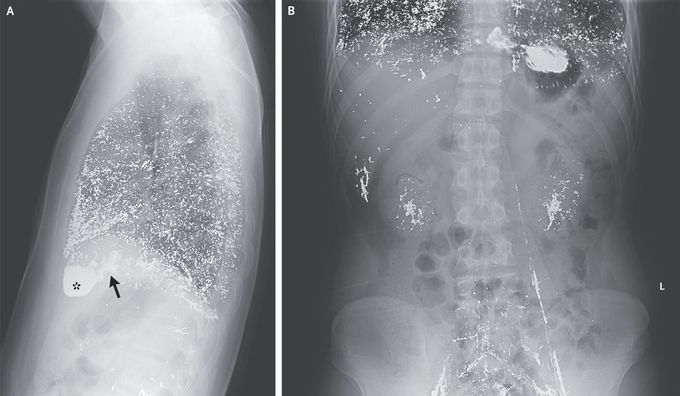


Mercury Poisoning
A previously healthy 25-year-old man presented to the general medicine clinic with a 3-month history of worsening fatigue, nausea, and dry cough. One week before the onset of his symptoms, he had injected 4 ml of elemental mercury intravenously as a folk remedy for tinea cruris. Conjunctival pallor was observed on physical examination. Laboratory studies showed a hemoglobin level of 6.5 g per deciliter (reference range, 12.0 to 16.0), a serum mercury level of 430 μg per deciliter (21,440 nmol per liter; reference value, <1.5 μg per deciliter [70 nmol per liter]), a 24-hour urine mercury level of 29,792 μg (148,510 nmol; reference value, <45 μg [220 nmol]), and normal renal function. A chest radiograph (Panel A) showed diffusely distributed metallic opacities in the lungs, right atrium (arrow), and right ventricle (asterisk). An abdominal radiograph (Panel B) showed similar metallic densities in the liver, kidneys, iliac veins, and left gonadal vein. A diagnosis of mercury poisoning was made. Inpatient chelation therapy with intravenous unithiol was initiated. After 2 weeks of treatment, the patient’s symptoms had abated, his hemoglobin level had increased to 8.0 g per deciliter, and his serum mercury level had decreased to 254 μg per deciliter (12,660 nmol per liter). The patient was discharged from the hospital with a recommendation to continue chelation therapy with oral dimercaptosuccinic acid.

